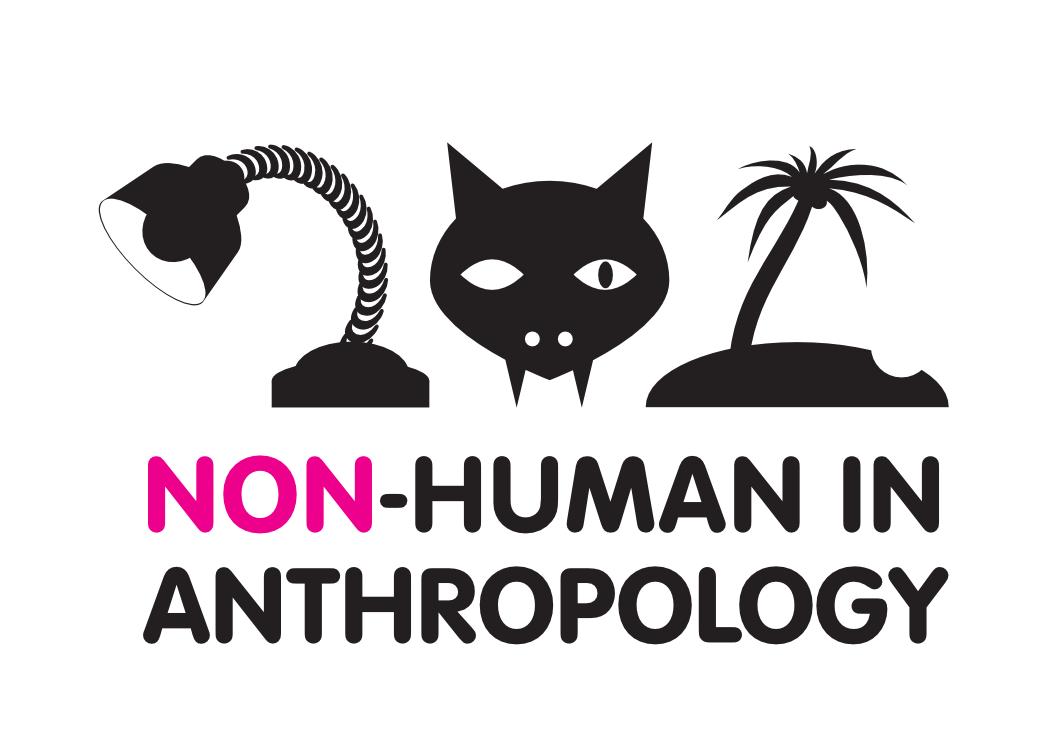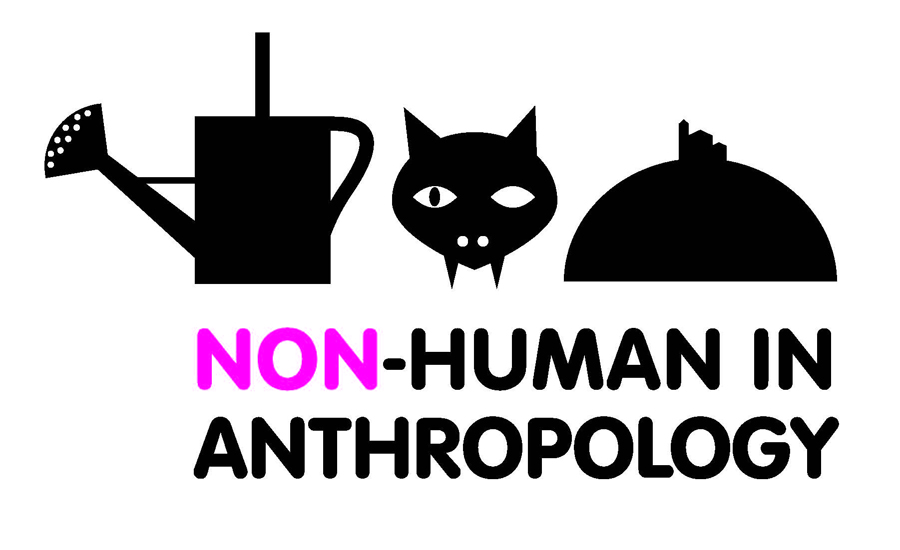The 2011 Non-human in anthropology: Limits and boundaries of social science
The second Non-human in anthropology conference took place in Prague in 2011. It concentrated on:
- the relationship of human and non-human (animal, machine, etc.)
- the issues of material culture, space, place and landscape
- the relationship of science and art and the issue of scientific representation
- the border between social and natural sciences
- the relationship of science and activism, politics and power
- and many others
A collective monograph on complementary issues will be published by around the end of 2012.
If interested, you can check
And ... yes, this was the last year's logo:

And this was the underlying logic of the 2011 conference:
In a few recent decades, interesting shifts within social sciences can be observed with old explanatory concepts having been altered or even displaced by new, more ambiguous ones. Thus “social” has been largely displaced by “culture” in what is now understood as cultural turn and others such as human, environment, society and even culture as such have been transformed significantly, their boundaries expanded, their content problematized. Dichotomies such as nature-culture, nature-society, subject-object, human-animal upon which explanations and understanding used to be based and which used to delimit scientific disciplines have become blurred and more complex, ambiguous and hybrid metaphors and concepts have come to the fore. Understanding is not to be sought at the poles of the dichotomies any more but rather in the space between them. Hybridity has been embraced and the figures of cyborg, vampire or ghost have left shadows in order to enter scientific thought, research and writing. The non-human and the ways it is intertwined with and incorporated in the human (and vice versa) as in the figures of cyborg or vampire have become key to comprehending humans and the world they live in. By acknowledging the importance of the non-human by social scientists while emphasizing hybridity allows for expanding the scope of social science and for pushing its limits and re-determining its boundaries.
But what is the position and role of social science in a world in which “nature” and “society” have merged into one another, the act of transgressing disciplinary boundaries has become a disciplinary necessity and scientific representation might be seen as creative as artistic one?
What are the outermost topics social scientists should engage with and what, if anything,
should be left solely to philosophy, natural sciences or art? And are these distinctions still
useful? What are the possibilities of cooperation and communication among these remote
archipelagos of diverse traditions, approaches and practices? Are there some concepts that
might assist us to “bridge the gap”?
The Non-human in anthropology: An interdisciplinary conference
The first Non-human in anthropology conference took place in Prague in 2010. It had three thematic sections:
- A) non-human and hybrid (human – animal – machine)
- B) material culture (things – commodities – sources)
- C) space (home – city – landscape)
A collective monograph from selected conference papers will be published by around the half of 2012.
If interested, you can check
And ... yes, this was the last year's logo:

And this was the underlying logic of the 2010 conference:
The “non-human and hybrid” section concentrates on the relations of human and non-human organisms from the point of view of anthropology, cultural history, literary theory and related disciplines. The “material culture” section is focused at topics generally analysed within material culture studies and wants to initiate dialogue of anthropology with related branches of social science (such as archaeology etc.). The topics of space, place, city and landscape are to be dealt with within the “space” section because of the importance they hold for social science for at least last two decades and because of their implicit presence in virtually all anthropological (and generally social science) research and thinking.
The conference structure stems from the fact that non-human forms an inseparable part of anthropology and related disciplines – a thematic part of what social science studies, but regarding the spatial also of where social science research takes place. However within Czech (sociocultural) anthropology the non-human is rather implicitly present than openly analysed and researched as the very topic. The aim of the conference is thus to bring the non-human into the light and to stimulate interest in and theoretically and empirically grounded debate about it.